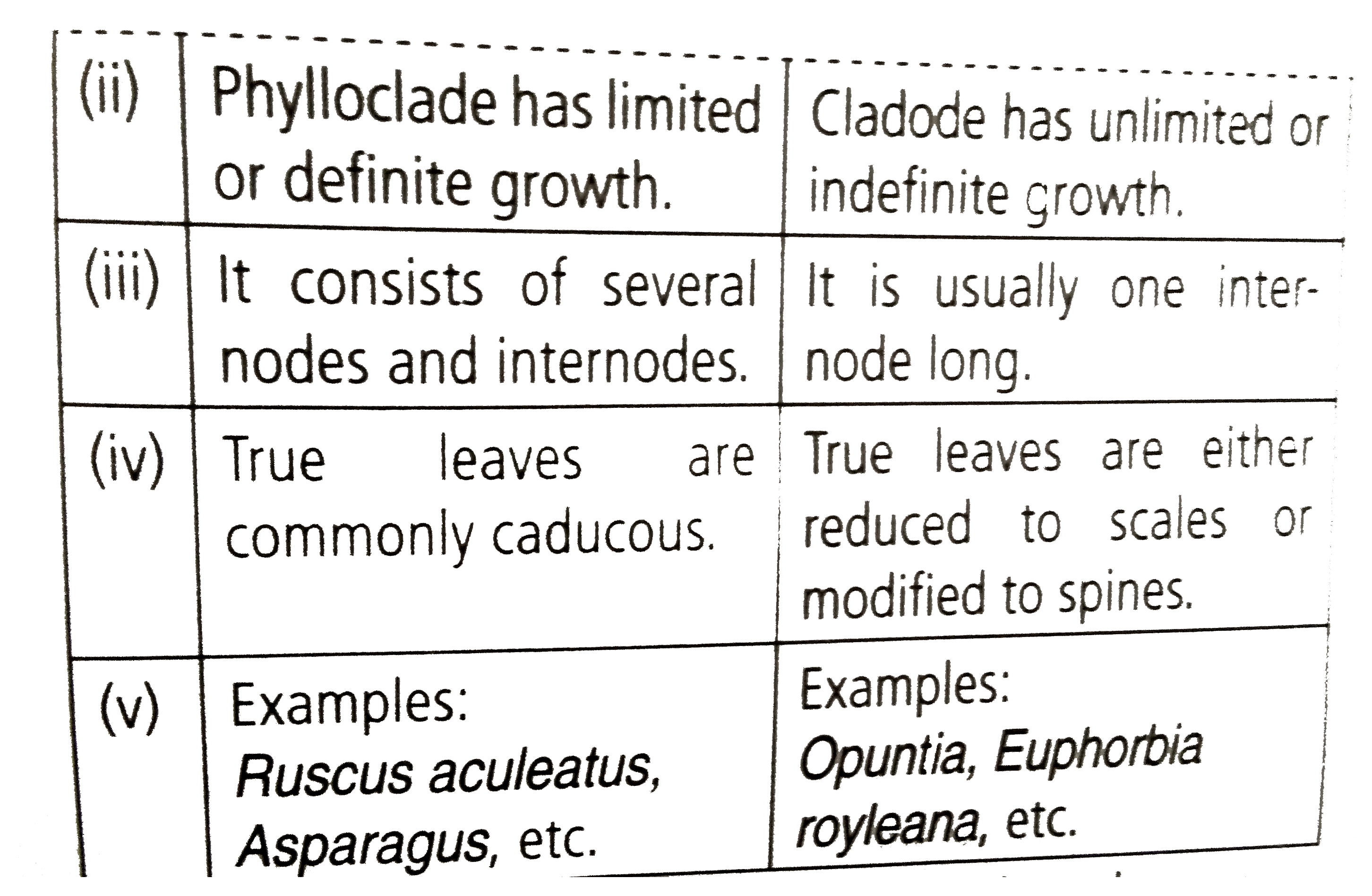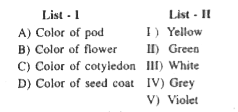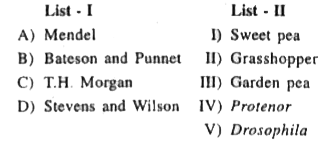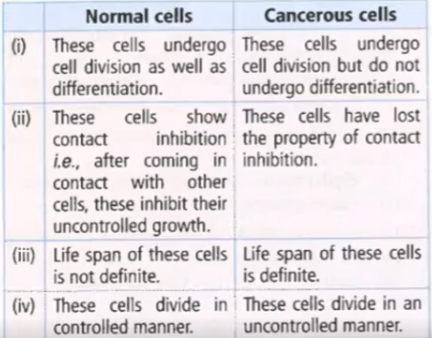Pick the correct option
All electrons have magnetic moment
All protons have magnetic moment
All nuclei have magnetic moment.
All atoms have magnetic moment.
The correct Answer is:A, B
To solve the problem, we need to analyze the magnetic moments associated with electrons, protons, nuclei, and atoms. Let's go through each option step by step:
Step 1: Understanding Magnetic Moment
Magnetic moment arises due to the motion of electric charges. In atoms, electrons revolve around the nucleus, creating a current loop which generates a magnetic moment.
Step 2: Analyzing Electrons
- Electrons: Each electron has a magnetic moment due to its orbital motion around the nucleus. The motion of the negatively charged electron creates a current, which results in a magnetic moment. Therefore, the statement "all electrons have magnetic moment" is true.
Step 3: Analyzing Protons
- Protons: Protons, being positively charged, also exhibit magnetic moments. Although they are located in the nucleus, the magnetic field generated by the revolving electrons can exert a torque on the protons, leading to a magnetic moment. Hence, the statement "all protons have magnetic moment" is also true.
Step 4: Analyzing Nuclei
- Nuclei: Nuclei consist of protons and neutrons. While protons have a magnetic moment, the overall magnetic moment of a nucleus is very small due to the presence of neutrons, which do not contribute to the magnetic moment. Therefore, while nuclei can have magnetic moments, their magnitude is negligible in comparison to that of electrons. Thus, the statement "all nuclei have magnetic moment" can be considered false in practical terms.
Step 5: Analyzing Atoms
- Atoms: An atom is electrically neutral overall, meaning that the positive charge of protons is balanced by the negative charge of electrons. The net current due to the motion of electrons can cancel out, leading to no net magnetic moment for the atom. Therefore, the statement "all atoms have magnetic moment" is false.
Conclusion
Based on the analysis:
- The correct options are:
- A: All electrons have magnetic moment (True)
- B: All protons have magnetic moment (True)
- C: All nuclei have magnetic moment (False)
- D: All atoms have magnetic moment (False)
Thus, the correct answer is options A and B.
Magnetic moment arises due to the motion of electric charges. In atoms, electrons revolve around the nucleus, creating a current loop which generates a magnetic moment.
- Electrons: Each electron has a magnetic moment due to its orbital motion around the nucleus. The motion of the negatively charged electron creates a current, which results in a magnetic moment. Therefore, the statement "all electrons have magnetic moment" is true.
- Protons: Protons, being positively charged, also exhibit magnetic moments. Although they are located in the nucleus, the magnetic field generated by the revolving electrons can exert a torque on the protons, leading to a magnetic moment. Hence, the statement "all protons have magnetic moment" is also true.
- Nuclei: Nuclei consist of protons and neutrons. While protons have a magnetic moment, the overall magnetic moment of a nucleus is very small due to the presence of neutrons, which do not contribute to the magnetic moment. Therefore, while nuclei can have magnetic moments, their magnitude is negligible in comparison to that of electrons. Thus, the statement "all nuclei have magnetic moment" can be considered false in practical terms.
- Atoms: An atom is electrically neutral overall, meaning that the positive charge of protons is balanced by the negative charge of electrons. The net current due to the motion of electrons can cancel out, leading to no net magnetic moment for the atom. Therefore, the statement "all atoms have magnetic moment" is false.
Based on the analysis:
- The correct options are:
- A: All electrons have magnetic moment (True)
- B: All protons have magnetic moment (True)
- C: All nuclei have magnetic moment (False)
- D: All atoms have magnetic moment (False)
Topper's Solved these Questions
- MAGNETIC PROPERTIES OF MATTERBook:HC VERMA ENGLISHChapter:MAGNETIC PROPERTIES OF MATTERExercise:Exercise
Explore 9 Videos
- MAGNETIC PROPERTIES OF MATTERBook:HC VERMA ENGLISHChapter:MAGNETIC PROPERTIES OF MATTERExercise:Short Answer
Explore 6 Videos
- MAGNETIC PROPERTIES OF MATTERBook:HC VERMA ENGLISHChapter:MAGNETIC PROPERTIES OF MATTERExercise:Objective 1
Explore 7 Videos
- MAGNETIC FIELD DUE TO CURRENTBook:HC VERMA ENGLISHChapter:MAGNETIC FIELD DUE TO CURRENTExercise:questions for short answer
Explore 12 Videos
- OPTICAL INSTRUMENTSBook:HC VERMA ENGLISHChapter:OPTICAL INSTRUMENTSExercise:Question for short Answer
Explore 12 Videos
Similar Questions
An electron , initiallty at rest is released from a large distance from a proton (fixed in space ). The de-broglie wavelength of the electron when it is at distance r from proton is λ the ratio of its kinetic energy at this distance with the kinetic energy of the electron is ground stae of hydrogen atom (Bohr model) with the radius of its orbit being r, is α Pick the correct options (s)
View SolutionA block of mass m sliding down an incline plane. The incline plane has fixed base length 'l' and coefficient of friction on the incline plane is 'μ'. The plane is fixed and block slides from top to bottom. Let θ0 be the inclination angle for minimum sliding time and v0 be the block's speed when it reaches the bottom in that case. Pick the correct option (s):

View Solution
Knowledge Check
 ,
,
Predict the correct option :A B
B C
C Dno reaction
Dno reactionFill in the blanks by picking the correct option. There are_____groups and_______periods in the extended form of periodic table.The group,all members of which are in gaseous state under ordinary condition is_______group.Most electropositive elements belongs to_____group.
A16,8.17,2B18.7,18,1C8,7,0,2D16,8,18,1Following table summerises the comparisions between phylloclades and cladodes (cladophylls).


Pick up the wrong differences and select the correct optionA(i) and (ii)B(ii) and (v)C(iii) and (v)D(ii) and (iv)
Match the following and select the correct option

The correct match is
View SolutionMatch the following and select the correct option

The correct match is
View SolutionSelect the correct option
View SolutionFollowing table summarises the differences between normal cells and cancerous cells. Pick up the wrong difference (s) and select the select the correct option.

View SolutionFind the correct option.

View Solution